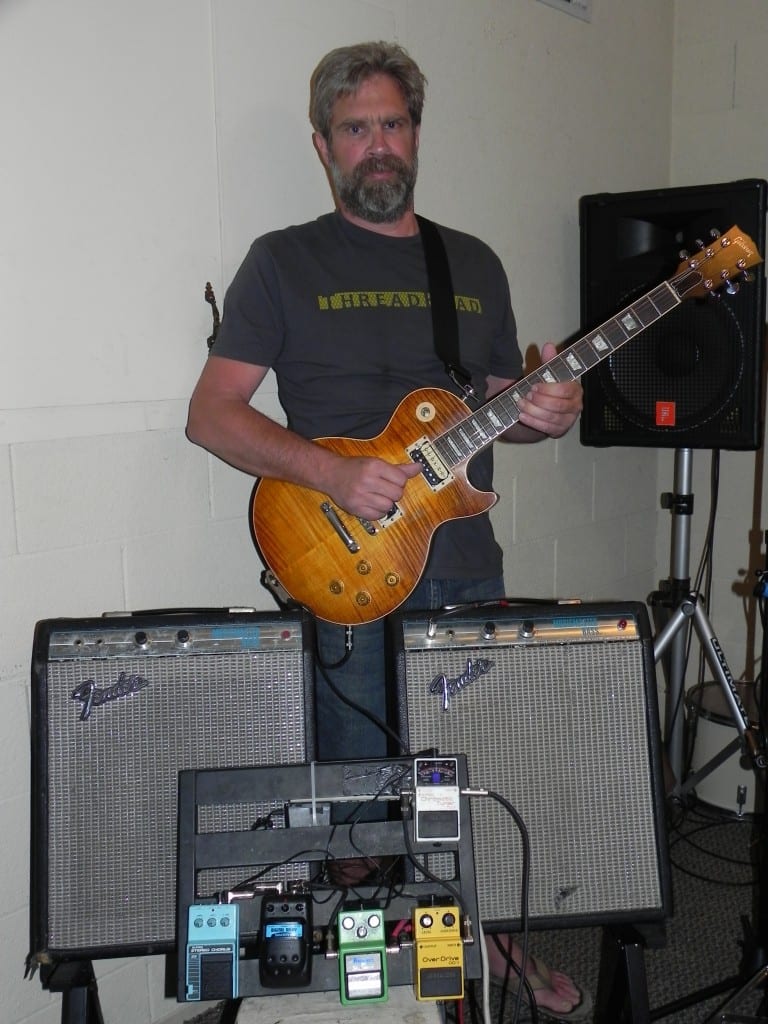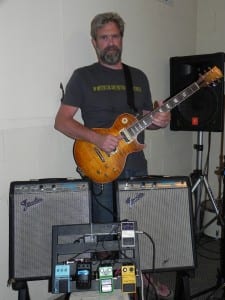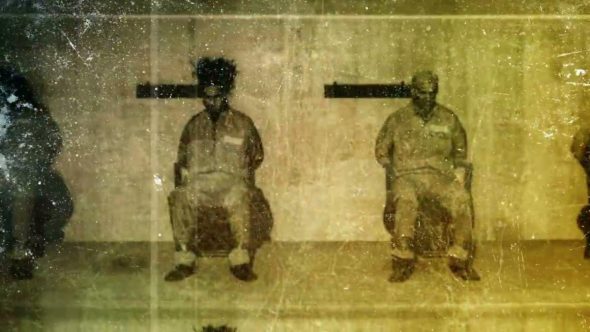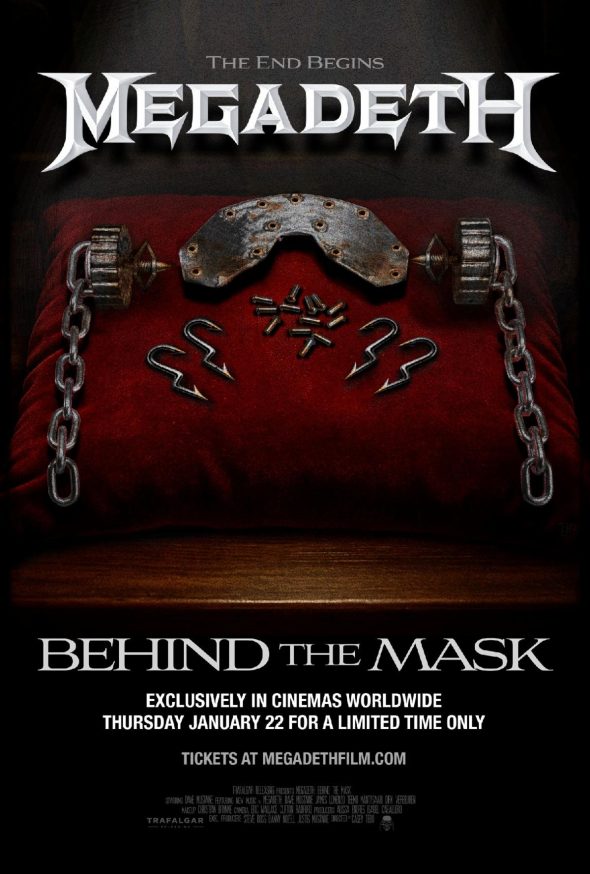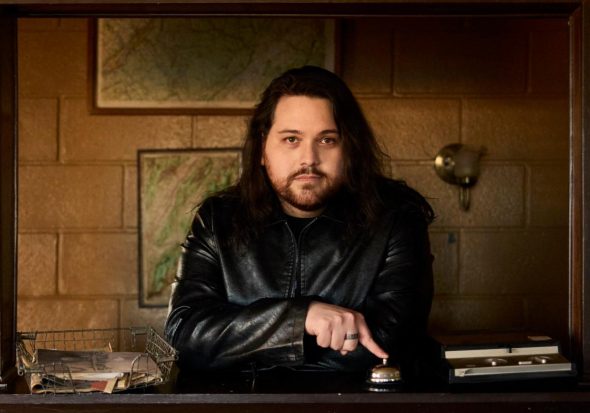by Dan Ernst
I am a San Luis Obispo County resident, own Grand Central Music and Conservatory and play in the local band The JD Project. The guitar I play is a 2005 Gibson Les Paul Standard Faded Honey Burst electric guitar with two Zebra-coil BurstBucker Pros pickups. I string my guitar with the new Ernie Ball Colbalt 10 to 46 strings and use Clayton Triangle 1.0 mm guitar picks.
The signal path
The first pedal in my signal path is a Boss TU-2 Chromatic Tuner pedal that I use for tuning and to power all my pedals with the Boss daisy chain power cable. I run the signal out of the tuner pedal straight into my vintage Boss OD-1 Overdrive guitar effect pedal with the JRC4558DD chip made in Japan for my lead/dirty-rhythm sound.
| Sound Clips |
Next, the signal goes into a modern reissue Ibanez TS-9 Tube Screamer modified with a JRC4558D chip and carbon-composite resistor. I use this primarily for my rhythm sound. It has a little less gain than the OD-1 and with the modifications, the low end is not “squashed” like the modern TS-9. After that, the signal goes into a Ibanez Soundtank Digital Delay DL5 pedal. This pedal has an old-school delay sound because the repeats are not crystal clear. This gives it somewhat of a tape echo/analog delay sound.
Last in the signal path is a vintage Ibanez SC10 Super Stereo Chorus pedal that I use to split the signal into stereo. I always leave this pedal on with the rate and depth set as low as possible. This gives me a stereo image without chorusing. I run the two signals into two 1970s vintage Fender Musicmaster bass amps. These low-watt, 12-watt amps sound awesome. They use a single 12AX7 pre-amp tube and a pair of 6AQ5A power-amp tubes. These power tubes have a great Fender tone that is slightly different then your typical low-watt power tube like a 6V6. Each amp has the original 12-inch blue label square ceramic magnet Fender (CTS) speakers in them that have been reconditioned. My pedals are mounted to a Pedaltrain JR pedal board, and all my cables are custom-made of high-quality instrument cable with switch-craft ends.
My settings
Both amps are set up the same way with the volume and tone knob set at 12 o’clock. This gives me a clean to slightly over-driven sound, depending on how I set my guitar volume.
The Boss OD-1 is set up with the drive all the way up and the tone at 12 o’clock. The level is set at a slight boost from the clean sound. This gives me a full over-driven sound for leads. The Ibanez TS-9 is set the same way as the OD-1 and gives me the traditional over-driven sound that the TS-9 is known for, which is great for rhythm and lead sounds.
The Ibanez delay I use primarily for leads, and I set it between 200 to 300 millisecs with 2.5 repeats. The level is set just high enough for me to hear the delay sound right beneath the original level. Rather than too much sound or a washed-out sound, for my solos, this gives me a tail on the end of the notes. See the sound clips below for tone examples.
Guitar: 2005 Gibson Les Paul Standard Faded Honey Burst.
Strap locks and strap: Ernieball
Stands: On Stage amp stands
Pickups: Two Zebra-coil BurstBucker Pros.
Guitar strings: Ernie Ball Cobalt 10 to 46.
Guitar picks: Clayton Triangle 1.0 mm.
Cables: Grand Central Music custom-made cables.
Amps: Two 1970s Fender Musicmaster bass amps with on 12 AX7 pre-amp and two 6AQ5A power tubes.
Pedals:
- Boss OD-1 Overdrive guitar effect pedal with JRC4558DD chip made in Japan.
- Ibanez TS-9 Tube Screamer reissue pedal with JRC4558D and carbon composite resistor module.
- Boss TU-2 Chromatic Tuner pedal with power daisy chain and Boss PSA-120S power adapter.
- Ibanez SC10 Super Stereo Chorus pedal.
- Ibanez Soundtank Digital Delay DL5 pedal.
Pedalboard: Pedaltrain JR with hard case.

